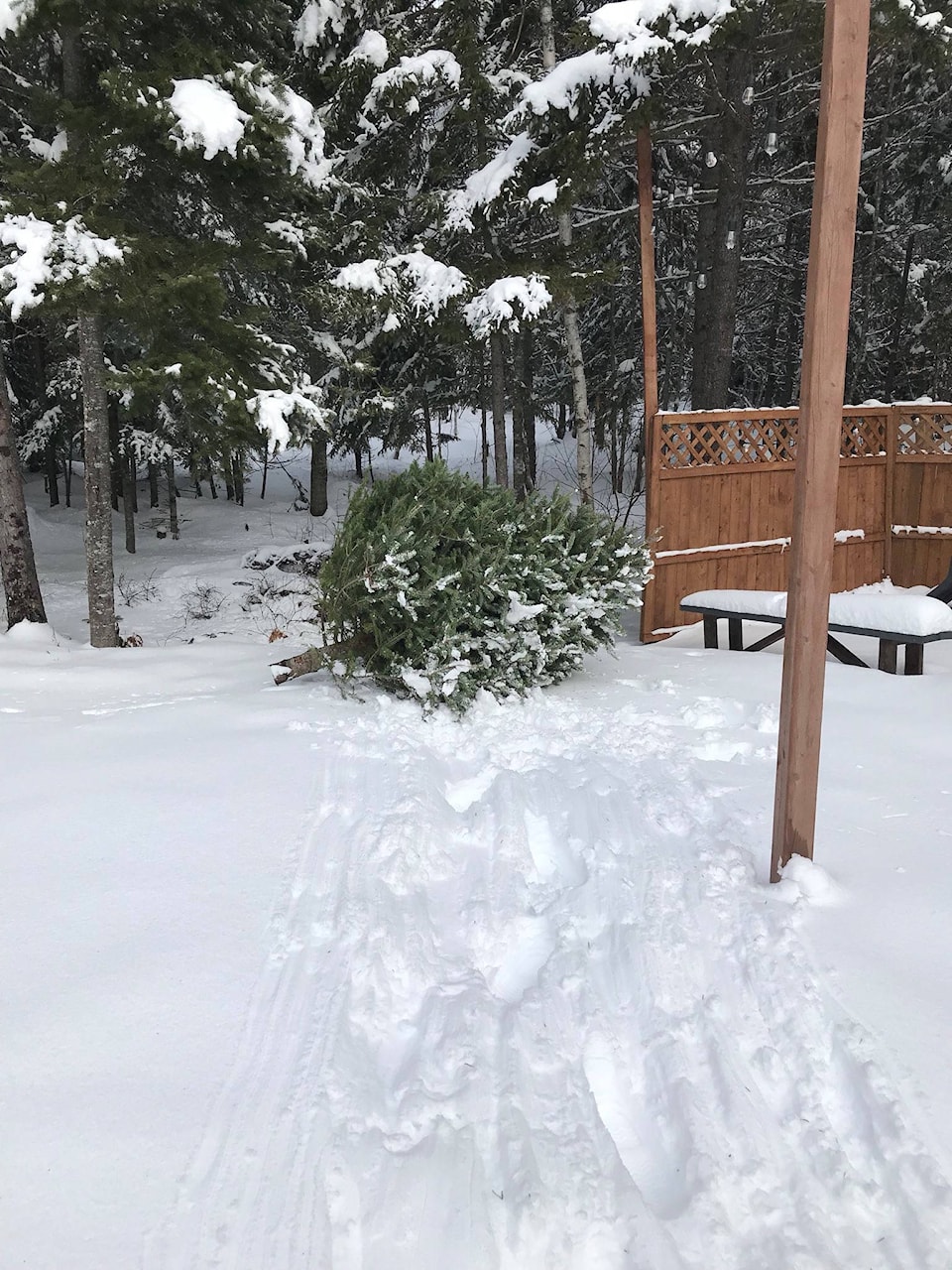Christmas trees have a useful purpose once the holidays are over, says the national organization the Nature Conservancy of Canada.
Leaving it in your backyard over the winter can provide many benefits for backyard wildlife by providing a habitat for bird populations during the winter months, especially on cold nights and during storms.
“Evergreens offer a safe place for birds to rest while they visit your feeder,” says Conservancy senior biologist Dan Kraus. “Another benefit is that if you leave the tree in your garden over the summer, it will continue to provide habitat for wildlife and improve your soil as it decomposes.”
Put the tree anywhere in the backyard. Prop it up near another tree, against a fence or lay it in your garden. You can even get the family involved by redecorating it with pine cones filled with peanut butter, strings of peanuts and suet for birds to enjoy. These delicious decorations will provide food for birds while they find shelter in the tree.
Kraus says the tree branches and trunk can provide habitat, shelter wildflowers, hold moisture and help build the soil, mimicking what happens with dead trees and branches in a forest. Toads will seek shelter under the log, and insects, including pollinators such as carpenter bees, will burrow into the wood.
By spring, the tree will have lost most of its needles. Simply cut the tree branches, lay them where spring flowers are starting to emerge in your garden and place the trunk on soil, but not on top of the flowers.
“By fall, the branches and trunk will begin to decompose and turn into soil,” says Kraus. “Many of our Christmas trees, particularly spruce and balsam fir, have very low rot resistance and break down quickly when exposed to the elements. The more contact the cut branches and trunk have with the ground, the quicker it will decompose. Drilling holes in the tree trunk will speed up that process.”
The Nature Conservancy of Canada is the nation’s leading not-for-profit, private land conservation organization, working to protect important natural areas and the species they sustain. To learn more, visit natureconservancy.ca.
